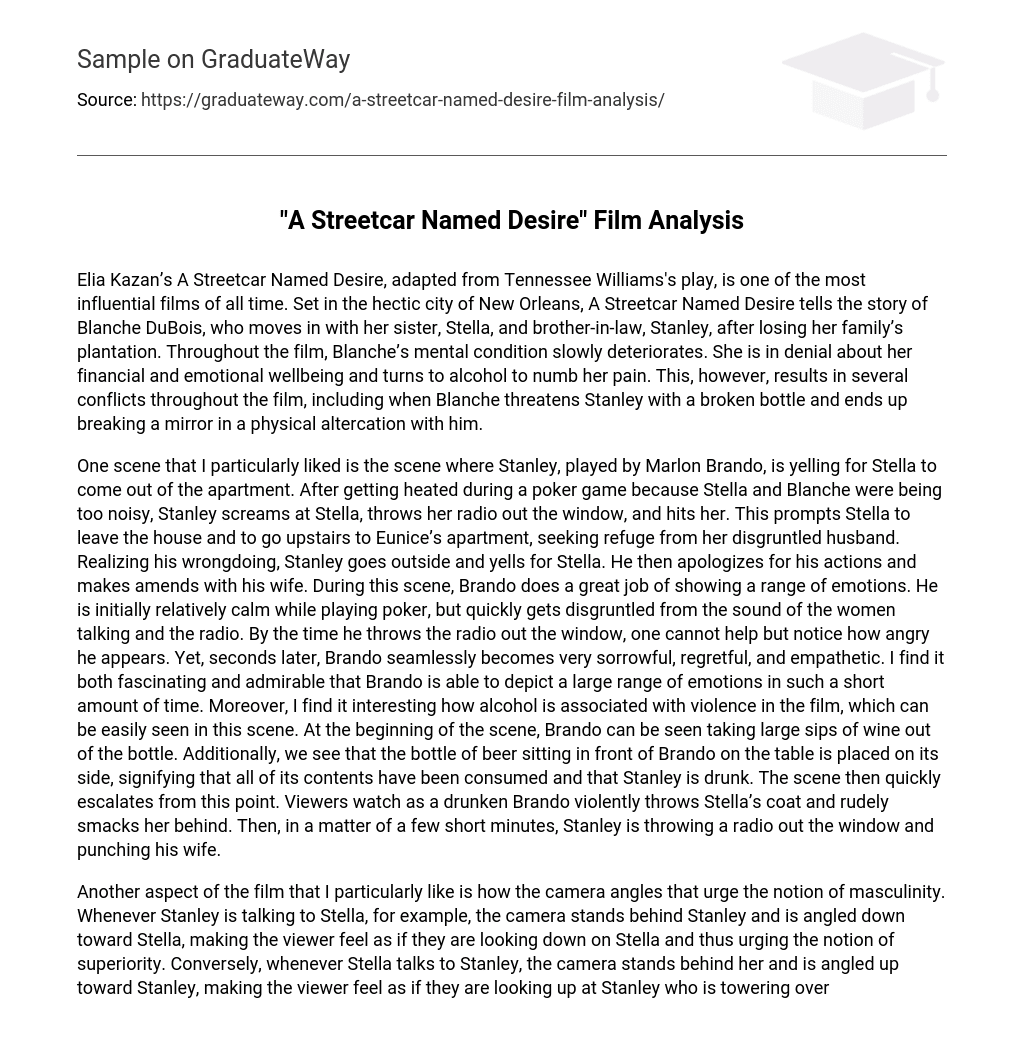Elia Kazan’s A Streetcar Named Desire, adapted from Tennessee Williams’s play, is one of the most influential films of all time. Set in the hectic city of New Orleans, A Streetcar Named Desire tells the story of Blanche DuBois, who moves in with her sister, Stella, and brother-in-law, Stanley, after losing her family’s plantation. Throughout the film, Blanche’s mental condition slowly deteriorates. She is in denial about her financial and emotional wellbeing and turns to alcohol to numb her pain. This, however, results in several conflicts throughout the film, including when Blanche threatens Stanley with a broken bottle and ends up breaking a mirror in a physical altercation with him.
One scene that I particularly liked is the scene where Stanley, played by Marlon Brando, is yelling for Stella to come out of the apartment. After getting heated during a poker game because Stella and Blanche were being too noisy, Stanley screams at Stella, throws her radio out the window, and hits her. This prompts Stella to leave the house and to go upstairs to Eunice’s apartment, seeking refuge from her disgruntled husband. Realizing his wrongdoing, Stanley goes outside and yells for Stella. He then apologizes for his actions and makes amends with his wife. During this scene, Brando does a great job of showing a range of emotions. He is initially relatively calm while playing poker, but quickly gets disgruntled from the sound of the women talking and the radio. By the time he throws the radio out the window, one cannot help but notice how angry he appears. Yet, seconds later, Brando seamlessly becomes very sorrowful, regretful, and empathetic. I find it both fascinating and admirable that Brando is able to depict a large range of emotions in such a short amount of time. Moreover, I find it interesting how alcohol is associated with violence in the film, which can be easily seen in this scene. At the beginning of the scene, Brando can be seen taking large sips of wine out of the bottle. Additionally, we see that the bottle of beer sitting in front of Brando on the table is placed on its side, signifying that all of its contents have been consumed and that Stanley is drunk. The scene then quickly escalates from this point. Viewers watch as a drunken Brando violently throws Stella’s coat and rudely smacks her behind. Then, in a matter of a few short minutes, Stanley is throwing a radio out the window and punching his wife.
Another aspect of the film that I particularly like is how the camera angles that urge the notion of masculinity. Whenever Stanley is talking to Stella, for example, the camera stands behind Stanley and is angled down toward Stella, making the viewer feel as if they are looking down on Stella and thus urging the notion of superiority. Conversely, whenever Stella talks to Stanley, the camera stands behind her and is angled up toward Stanley, making the viewer feel as if they are looking up at Stanley who is towering over us. This makes viewers feel that they are inferior to Brando’s character and suggests that the male character is more dominant and important than the female character.





